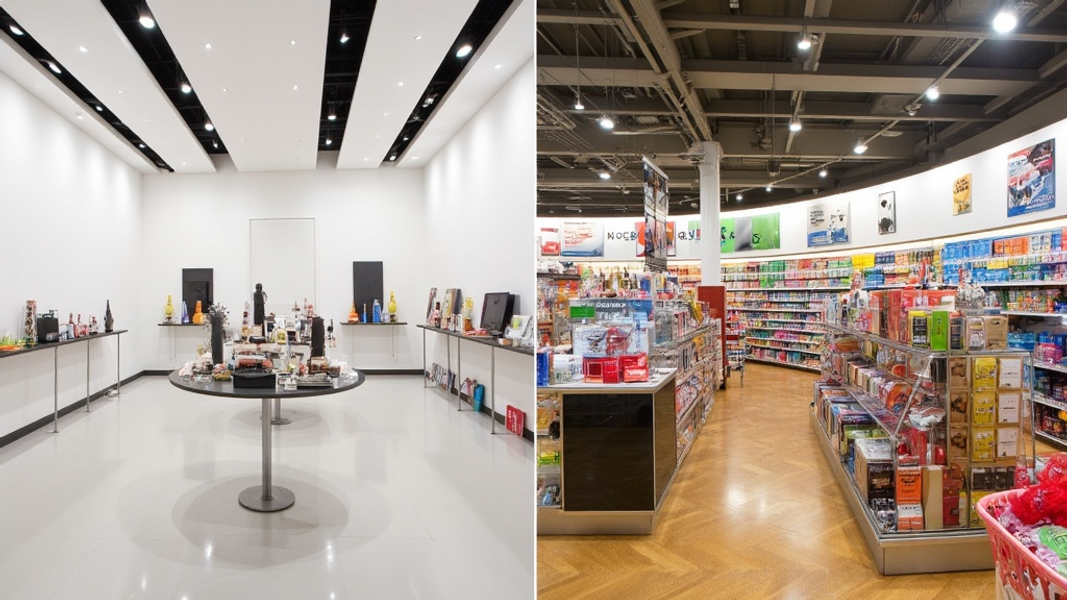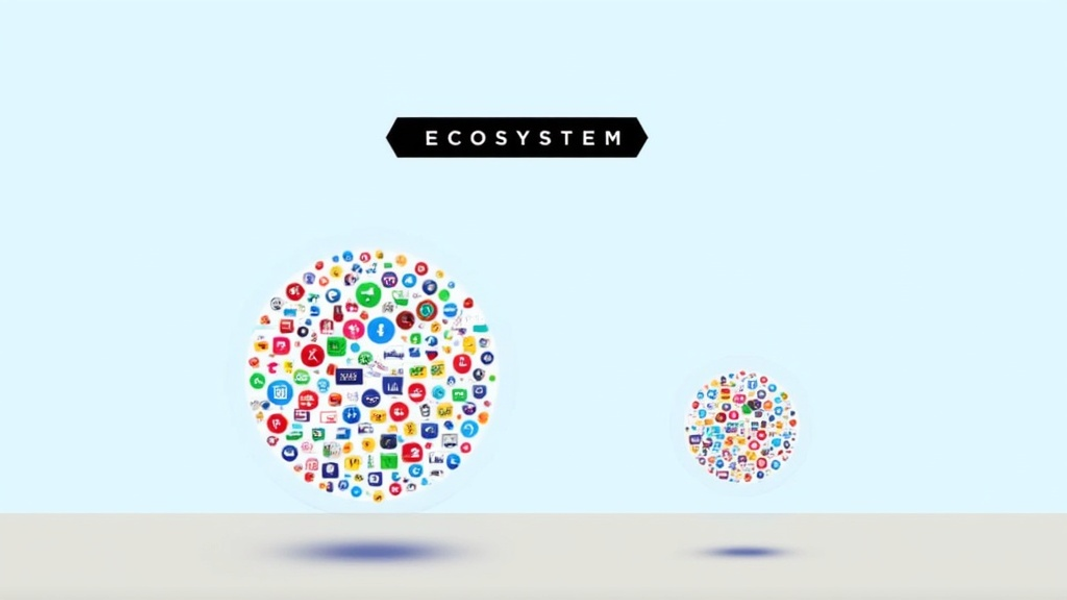
Are you ready to start selling online but can't decide between Squarespace and Shopify? You're not alone. Picking the right e-commerce platform can make or break your online business. This guide will help you understand the key differences between Squarespace and Shopify, so you can make the best choice for your needs.
A Quick Look at Squarespace and Shopify
Before we dive into the details, let's get a bird's-eye view of these two popular e-commerce platforms.
| Feature | Squarespace | Shopify |
|---|---|---|
| Main focus | Website building with e-commerce | Dedicated e-commerce |
| Ease of use | Very easy | Moderate learning curve |
| Design options | Excellent | Good |
| E-commerce tools | Good | Excellent |
| App ecosystem | Limited | Extensive |
| Pricing | $16 - $54 per month | $29 - $299 per month |
Squarespace started as a website builder and later added e-commerce features. It's known for its beautiful designs and ease of use. Shopify, on the other hand, was built from the ground up for online selling. It offers more advanced e-commerce tools but can be a bit harder to learn.
Getting Started: Ease of Use and Design
User-Friendly Setup
When you're just starting out, you want a platform that's easy to use. Squarespace shines in this area. Its drag-and-drop editor is a breeze to use, even if you've never built a website before. You can move things around, add new sections, and see your changes in real-time.
Shopify isn't hard to use, but it does have more moving parts. You might need to spend some time learning where everything is and how it all works together. But once you get the hang of it, Shopify's backend is clear and well-organized.
Making Your Store Look Great
First impressions matter, especially online. Squarespace is famous for its stunning templates. They look modern and professional right out of the box. You can easily change colors and fonts to match your brand. Squarespace's designs often have a clean, minimalist feel that works well for many types of businesses.
Shopify's themes are more focused on selling. They're designed to showcase products and make buying easy. While they might not be as visually striking as Squarespace's templates, Shopify themes are built with conversion in mind. You can find themes for different industries, from fashion to electronics.

Selling Online: E-commerce Features
Managing Your Products
When it comes to selling, Shopify pulls ahead. It offers powerful tools for managing your inventory, even if you have hundreds of products. You can easily set up variations like size and color, and Shopify will track stock for each one. The platform also makes it simple to offer discounts and run sales.
Squarespace's product management is simpler. It works well for stores with fewer products or those selling digital goods. You can still set up variations and track inventory, but it's not as detailed as Shopify. However, Squarespace makes it easy to create beautiful product pages with large images and clean layouts.
Taking Payments
Both platforms let you accept credit cards and other popular payment methods. Shopify has its own payment system called Shopify Payments. If you use it, you avoid extra transaction fees. But you can also use other payment gateways if you prefer.
Squarespace works with Stripe for payments. It's easy to set up, but you don't have as many options as with Shopify. Both platforms charge similar fees for transactions, usually around 2.9% + $0.30 per sale.
Shipping Your Products
For businesses that ship physical products, Shopify has a clear advantage. It can calculate shipping rates in real-time from major carriers. You can print shipping labels right from your Shopify dashboard. The platform even offers discounted shipping rates in some countries.
Squarespace's shipping features are more basic. You can set up flat rates or free shipping, but you don't get real-time calculations. For small businesses or those just starting out, this might be enough. But as you grow, you might find Shopify's advanced shipping tools more helpful.
Marketing Your Store
Built-in Marketing Tools
Both platforms offer tools to help you promote your store, but they focus on different areas. Shopify has strong features for email marketing and selling on social media. You can create email campaigns to reach out to customers and easily list your products on Facebook and Instagram.
Squarespace leans more towards content marketing. Its blogging tools are excellent, making it easy to create engaging posts that can attract customers to your site. Squarespace also offers email marketing, but it's not as advanced as Shopify's.
Search Engine Optimization (SEO)
Getting found on Google is crucial for any online business. Shopify and Squarespace both offer basic SEO tools. You can edit your page titles, meta descriptions, and URLs on both platforms.
Shopify has an edge when it comes to more advanced SEO features. There are many SEO apps in the Shopify App Store that can help you optimize your site further. Squarespace's SEO tools are built-in and easy to use, but they're not as flexible as what you can achieve with Shopify and its apps.
Expanding Your Store: Apps and Integrations
As your business grows, you might need more features than what comes standard with your e-commerce platform. This is where Shopify really stands out. The Shopify App Store has thousands of apps that can add new features to your store. Whether you need advanced analytics, customer service tools, or marketing automation, there's probably an app for it.
Squarespace has a much smaller selection of integrations and extensions. While they cover the basics like connecting to social media or email marketing services, you don't have nearly as many options as with Shopify. This can be limiting if you have specific needs or want to automate certain parts of your business.

Pricing: What Will It Cost?
Choosing an e-commerce platform isn't just about features—cost is a big factor too. Here's a breakdown of the pricing for both platforms:
| Plan | Squarespace | Shopify |
|---|---|---|
| Basic | $23/month | $29/month |
| Mid-tier | $39/month | $79/month |
| Advanced | $54/month | $299/month |
Squarespace is generally cheaper, especially at the lower tiers. But remember, Shopify's plans include more e-commerce features out of the box. With Squarespace, you might need to upgrade to a higher plan to get some features that come standard with Shopify.
Also, keep in mind that these prices don't include potential costs for apps (especially on Shopify) or premium themes. These can add to your monthly expenses.
Growing Your Business: Scalability
If you're planning for your business to grow big, scalability is key. Shopify is built to handle growth. Its highest tier, Shopify Plus, is used by large companies selling millions of dollars worth of products. The platform can handle high traffic and large numbers of products without slowing down.
Squarespace can certainly grow with your business to a point. But it's not designed for very large online stores. If you're aiming to become a major e-commerce player, you might eventually outgrow what Squarespace can offer.
Real-World Examples: Who Uses These Platforms?
A Small Business on Squarespace
Let's look at "Handmade Happiness," a small jewelry business. They chose Squarespace for its beautiful templates and easy-to-use interface. The owner, Sarah, isn't tech-savvy but was able to set up her store quickly. She loves how her products look on the site and finds it easy to update her inventory. The built-in blogging tools help her share the stories behind her creations, which her customers love.
A Growing Brand on Shopify
On the other hand, there's "Urban Threads," a clothing brand that started small but grew quickly. They chose Shopify for its scalability. As their product line expanded, Shopify's robust inventory management kept everything organized. They use several apps from the Shopify App Store to automate their marketing and customer service. The ability to sell on multiple channels, including their own website, Facebook, and Instagram, has been key to their growth.
Making Your Choice: Squarespace or Shopify?
So, which platform should you choose? Here's a quick guide:
Choose Squarespace if:
- You want a beautiful website with a side of e-commerce
- You're selling a small number of products
- You value ease of use over advanced features
- Content marketing is a big part of your strategy
Choose Shopify if:
- Your main focus is selling products online
- You plan to scale your business significantly
- You need advanced e-commerce features
- You want access to a large app ecosystem for added functionality
Remember, the best choice depends on your specific needs and goals. Both platforms offer free trials, so you can test them out before making a final decision.
Frequently Asked Questions
Can I switch from Squarespace to Shopify (or vice versa) later?
Yes, you can switch between platforms, but it's not always easy. You'll need to export your products and customer data, then import it into the new platform. Design elements usually don't transfer, so you'll need to set up your new store's look from scratch.
Do I need coding skills to use these platforms?
For basic use, no coding skills are needed for either platform. However, if you want to make advanced customizations, some knowledge of HTML and CSS can be helpful, especially with Shopify.
Can I use my own domain name with these platforms?
Yes, both Squarespace and Shopify allow you to use your own domain name. Squarespace even includes a free domain for the first year on annual plans.
Which platform is better for SEO?
Both platforms have good basic SEO features. Shopify has an edge due to its larger selection of SEO apps and more customization options. However, for most small to medium businesses, either platform can provide the necessary SEO tools.
Can I sell digital products on these platforms?
Yes, both Squarespace and Shopify support selling digital products like e-books, music, or software downloads. Shopify offers more advanced features for digital product delivery, especially through apps.
Choosing between Squarespace and Shopify comes down to your specific needs and goals. Take the time to consider what features are most important for your business, and don't be afraid to try out both platforms before making your final decision. With the right choice, you'll be well on your way to e-commerce success.
